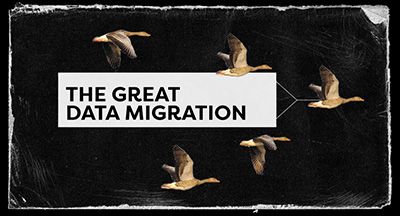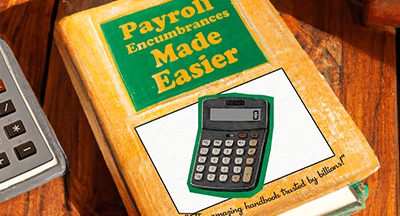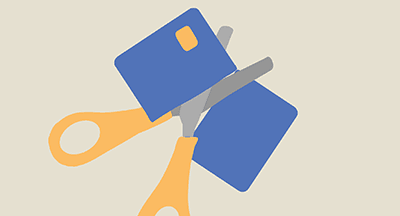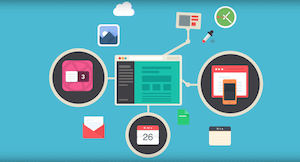Beyond the Binary in Core Subjects: How Students Can Discover Their Personal Power
BY Erin WerraAt its most primal, choice is our first method of control, leadership, and self-esteem.
There’s a false binary holding kids back: worse yet, students, staff, and parents buy into it year after year. The core idea is deceptively simple: if you’re a STEM whiz, you can’t also be a dreamy reader. If you’re a mathlete, you’ll hate to see a whimsical art teacher coming. If you’re a gym rat, then you can’t possibly excel in English literature.
But what if we developed past the either/or choices? What if instead of two roads diverging in the woods, students could identify a galaxy of paths to blaze?
If we want more Benjamin Franklins, we need to match his freedom freak
If we rewind history to pre-industrial eras, the archaic career of the polymath essentially meant someone known to draw on their “complex body of knowledge” (thanks Wiki) to solve problems.The term “polymath” dates back to the early 1600’s. But famous examples go way, way back to BC, and include people like Hypatia, Leonardo da Vinci, Benjamin Franklin, Florence Nightengale, and more. Legendary thinkers whose endless supply of curiosity and zest for knowledge led them to multiple areas of learning, whether academic or social or artistic or spiritual.
Could we raise pint-sized polymaths today? Rather than see them as exceptional, author Waqas Ahmed emphasized in his 2018 book The Polymath: Unlocking the Power of Human Versatility that every human has multiple interests and talents, which means anyone could become a polymath skilled in at least three different fields. In fact, Ahmed specifically calls out the fallacies of the thinker vs. doer and art vs. science dichotomies, emphasizing the freedom that follows when subjects gently leaf together.
Build a strong self-concept to flourish in learning
The missing spark of inspiration leading to insatiable lust for learning may not lie within the curriculum. If each student has a latent polymath lurking, then lead the student to meet their true self.This process has gotten harder as technology adds more layers between a person and their personality. Students and adults alike have become distracted by the siren song of social media and its quantification of self. Instead of doing deep internal work, folks are content to post a selfie for dopamine and call it a day. A few challenges emerge as today’s students navigate self-expression.
Challenge: Not having a self-concept
A positive self-concept helps students feel capable and leads to increased effort at school. But what if students haven’t been encouraged to define and meet their true selves yet? An educator may provide an invitation for students who get stuck on a superficial definition of knowing themselves. Sure, you might be able to name your favorite things, but can you define who you believe yourself to be now and whom you’re going to become?
Students can evolve from listing traits to seeing the full picture of who they are as learners and people.
Challenge: Educator bias
A teacher’s unrecognized and unhealed bias can sever fragile self-esteem in seconds.
In a recent survey of high school students and teachers, most students indicated their motivation for STEM courses grew along with them. Most teachers disagreed, stating they saw motivation wane as students progressed in education. Who’s right? Teachers are professionals with sound reason, while believing students’ opinions about their own capabilities is crucial for motivation and engagement.
Challenge: Peer opinions
One of the biggest challenges teachers face is the mob mentality that school isn’t a very cool thing to do.
Kids begin thinking of how their peers view them at a super early age, usually by second grade. Research tells us that the role of feedback in the student’s motivation is different for boys and girls. Girls are more likely to take feedback to heart, possibly affecting self-esteem. Boys tend to take feedback with a grain of salt.
Solutions thoughtful adults can implement (even if it’s not immediately scalable)
As educators work to dismantle the binary mentality and build up students’ capability to choose from myriad paths forward, there are actionable strategies that can fit into a jampacked school day.
Bias awareness for educators
Just awareness will do. Rather than the latest pricey-but-hollow PD hype-messaging, consider going granular and mirroring the path students are taking. “Teachers, know thyself and thy blind spots” to better serve students.
Modeling behavior
Trying and failing and trying again sounds great on paper but when educators model the process of taking risks, everyone learns how to fail together. You’re walking the walk as well as talking the talk, and that’s important. “DIY and watch me try,” but rest assured students will be the next at-bat to chase productive failure.
SEL: Particularly how students speak about and to each other
As social-emotional intelligence and leadership erodes from homes and schools, all that’s left is the yucky stuff: the adversarial, friction-filled pleas for connection based on bad behavior. If all you have is a hammer, everything looks like a nail. Luckily, we can practice being a good friend at school, too.
Why does it matter, anyway?
Challenging the binary matters because it’s the way we’ll learn to do things better, faster, stronger, and more effectively. Students in schools will be creating the future for all of us: in the workforce, civilization, and the world. Practicing self-motivation through a truly individual lens will not only help students achieve more today but also prime them for pushing for more than the status quo in years to come.
WHAT'S NEXT FOR YOUR EDTECH? The right combo of tools & support retains staff and serves students better. We'd love to help. Visit skyward.com/get-started to learn more.

|
Erin Werra Blogger, Researcher, and Edvocate |
Erin Werra is a content writer and strategist at Skyward’s Advancing K12 blog. Her writing about K12 edtech, data, security, social-emotional learning, and leadership has appeared in THE Journal, District Administration, eSchool News, and more. She enjoys puzzling over details to make K12 edtech info accessible for all. Outside of edtech, she’s waxing poetic about motherhood, personality traits, and self-growth.




